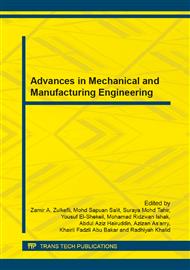p.292
p.298
p.304
p.310
p.315
p.323
p.329
p.335
p.340
Effect of Operating Temperatures on Thermal Conductivity of Polystyrene Insulation Material: Impact on Envelope-Induced Cooling Load
Abstract:
The impact of the thermal conductivity (k-value) change of polystyrene insulation material in building envelope due to changes in temperature on the thermal and energy performance of a typical residential building under hot climate is investigated. Indeed, the thermal and energy performance of buildings depends on the thermal characteristics of the building envelope, and particularly on the thermal resistance of the insulation material used. The thermal insulation material which is determined by its thermal conductivity, which describes the ability of heat to flow cross the material in presence of a gradient of temperature, is the main key to assess the performance of the thermal insulation material. When performing the energy analysis or calculating the cooling load for buildings, we use published values of thermal conductivity of insulation materials, which are normally evaluated at 24°C according to the ASTM standards. In reality, thermal insulation in building is exposed to significant and continuous temperature variations, due essentially to the change of outdoor air temperature and solar radiation. Many types of insulation materials are produced and used in Oman, but not enough information is available to evaluate their performance under the prevailing climatic condition. The main objective of this study is to investigate the relationship between the temperature and thermal conductivity of various densities of polystyrene, which is widely used as building insulation material in Oman. Moreover, the impact of thermal conductivity variation with temperature on the envelope-induced cooling load for a simple building model is discussed. This work will serve as a platform to investigate the effect of the operating temperature on thermal conductivity of other building material insulations, and leads to more accurate assessment of the thermal and energy performance of buildings in Oman.
Info:
Periodical:
Pages:
315-320
Citation:
Online since:
June 2014
Authors:
Keywords:
Price:
Сopyright:
© 2014 Trans Tech Publications Ltd. All Rights Reserved
Share:
Citation:


